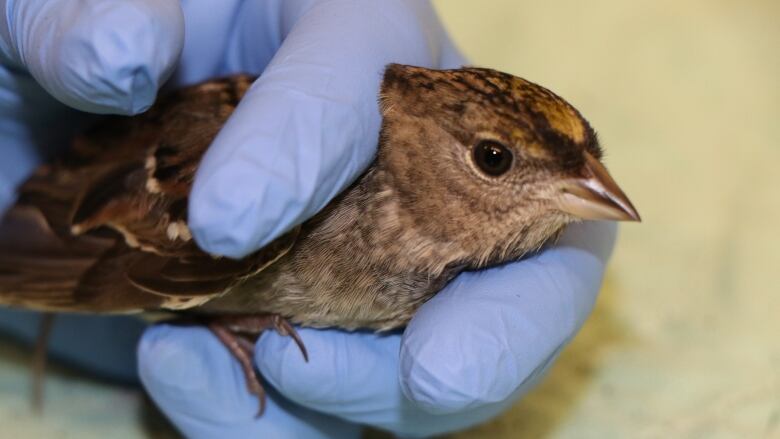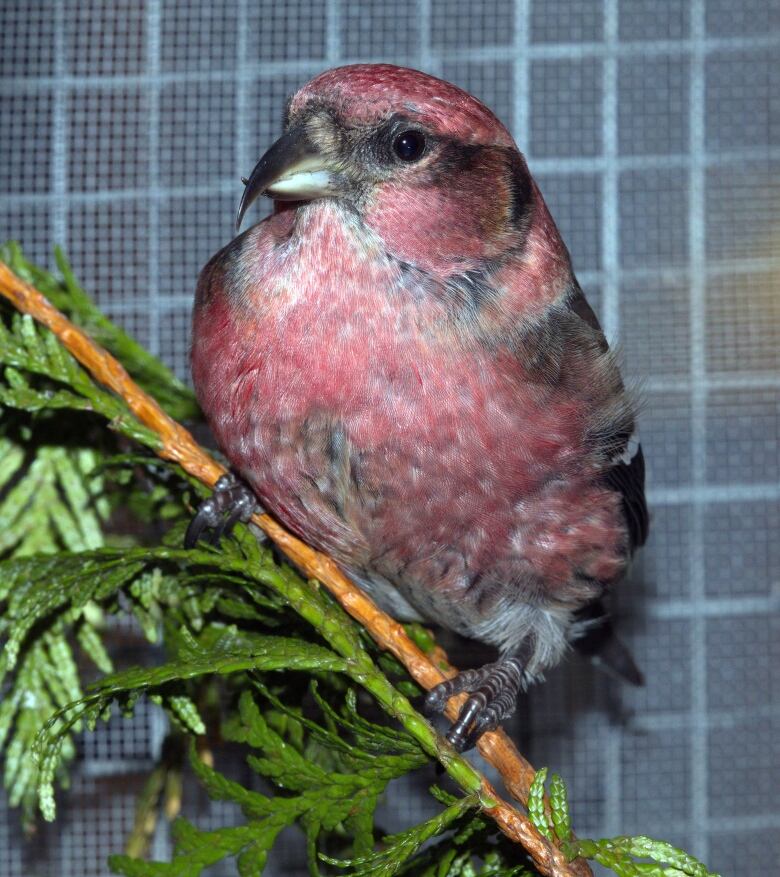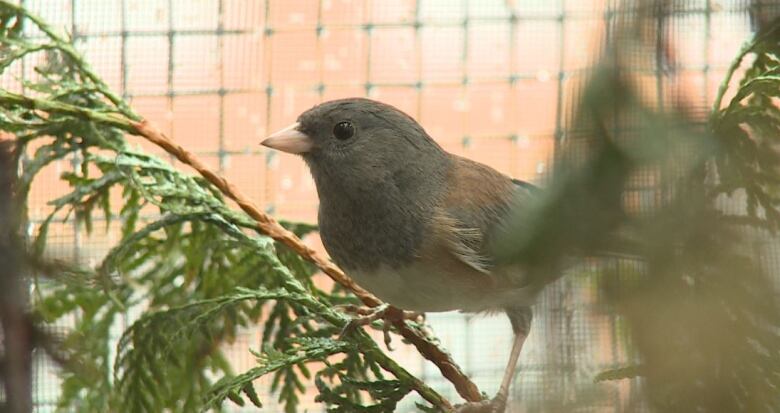Bird migration patterns changing because of B.C. wildfires, rescue group suggests
Wildlife Rescue Association of B.C. says it took in two-thirds more injured songbirds this year than last

There is some unusual activity at Burnaby's Wildlife Rescue Association of B.C., and the group says this year's wildfires may be the cause.
Since August, the association has taken in 664 injured songbirds, 66 per cent more than last year's total during the birds' annual fall migration to the south.
- B.C. wildlife struggles with summer heat and wildfires
- More birds are flying into windows in Metro Vancouver, wildlife rescue says
"It's usual to see a jump between 40 or 50 birds between years, but more than 250 is a huge leap," said Coleen Doucette, executive director of the rescue group.
In addition, for the first time in 10 years, an injured white-winged crossbill was brought in to the rescue centre. The bird is rarely seen in the Lower Mainland and itsnormal migration route is through the Interior and Alberta as it flies south for the winter.

"Compare this to previous years and it's easy to see this year something has been markedly different, and nothing highlights the timeframe more than the wildfires," said Doucette.
She said it's likely the wildfires affected the migration patterns of some birds, pushing them to the coast, where they've been flying into windows and getting injured.
In Delta, the Orphaned Wildlife Rehabilitation Society says it's already seen 50 to 100 more injured birds of prey come in for treatment than last year.
The Canadian Wildlife Service monitors the migration of landbirds, like songbirds, to help track populations throughout British Columbia.
Biologist Wendy Easton said people working at the service's tracking station in the Chilcotin region one of the areas hit hard by the wildfiresthis summer caught and tagged around 1,000 birds when they normally capture close to 1,800.
"Certainly having the fires at the scale that we did and the extent that we did this year in British Columbia, we are likely to see some decreases or increases in bird numbers because of that," she said.

Easton said there was also a noticeable decrease in the number of birds that eat insects while flying, known as "aerial insectivores."
"Birds do have some flexibility in their migration routes and in their timing, so it could be that birds headed either sooner or towards the coast and tried to avoid other areas of the province."
She said more information is still coming in, so the jury is out on the correlation between wildfires and bird migration, as well as what this means for bird populations in the future.
Easton said these birds, whichprovide ecosystem services such as pest control, seed dispersal and pollination, are often used as indicators of the health of our ecosystems.
"Many of these species are used to having wildfires, and if their numbers are down this yearthey may indeed rebound next year as the forest rejuvenates from the wildfires, but again we'll just have to wait and see," Easton said.












_(720p).jpg)


 OFFICIAL HD MUSIC VIDEO.jpg)
.jpg)



























































































